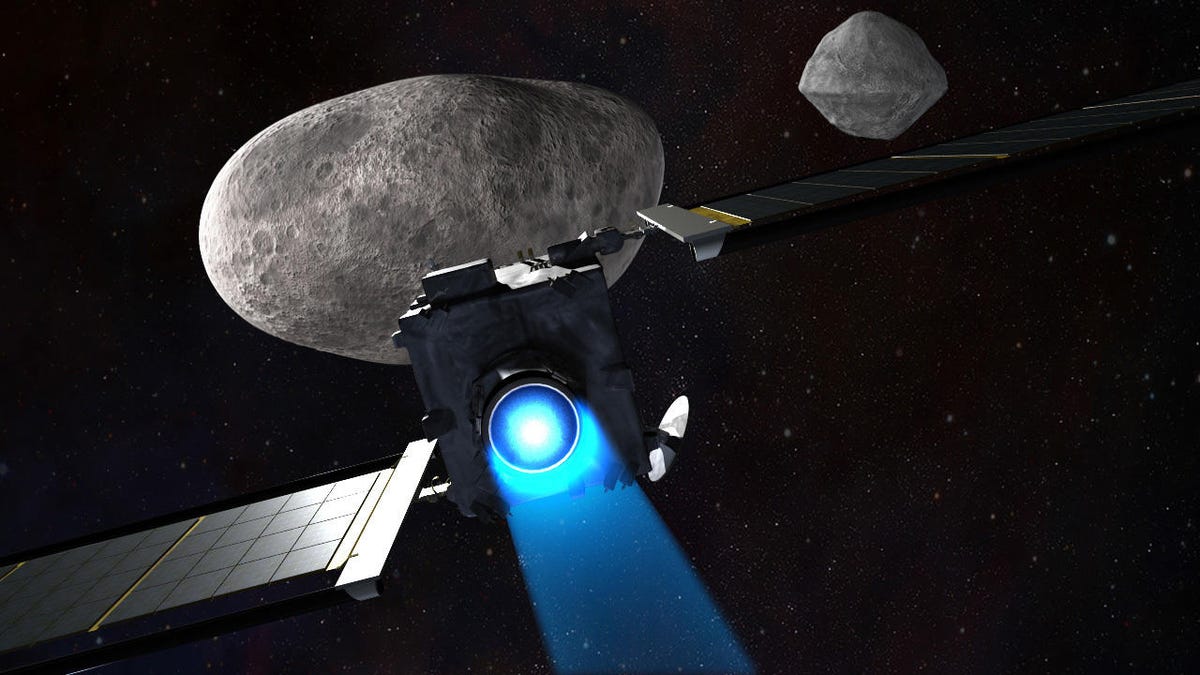SpaceX will help NASA go crash an asteroid
NASA's DART mission will attempt to deflect a moonlet, and a SpaceX Falcon 9 will send it on its way.
The potential for an asteroid apocalypse scenario has NASA concerned enough to create the DART mission, a project that sounds straight out of a sci-fi action movie. The space agency has now cast SpaceX as a key supporting player.
NASA announced Thursday that it's awarded a launch services contract for the Double Asteroid Redirection Test (DART) to SpaceX. The launch is scheduled for June 2021 on a Falcon 9 rocket blasting off from Vandenberg Air Force Base in California.
The total cost to launch DART is about $69 million (£53 million, AU$96 million).
DART is designed to intercept a small moon of the asteroid Didymos in late 2022 when the rock comes within 6.8 million miles (11 million kilometers) of Earth. The spacecraft will crash into the moonlet, nicknamed "Didymoon," in an attempt to redirect its course.
"The collision will change the speed of the moonlet in its orbit around the main body by a fraction of one percent, enough to be measured using telescopes on Earth," NASA said.
If DART is successful, then the same concept could potentially be used to nudge hazardous asteroids away from Earth before they can wreak havoc.
The contract is another NASA win for SpaceX, which is already deep into development of a Crew Dragon capsule for ferrying astronauts to the International Space Station. As cool as that is, there's something extra-awesome about being involved in smashing a spacecraft into an asteroid.
Originally published 9:21 a.m. PT.


